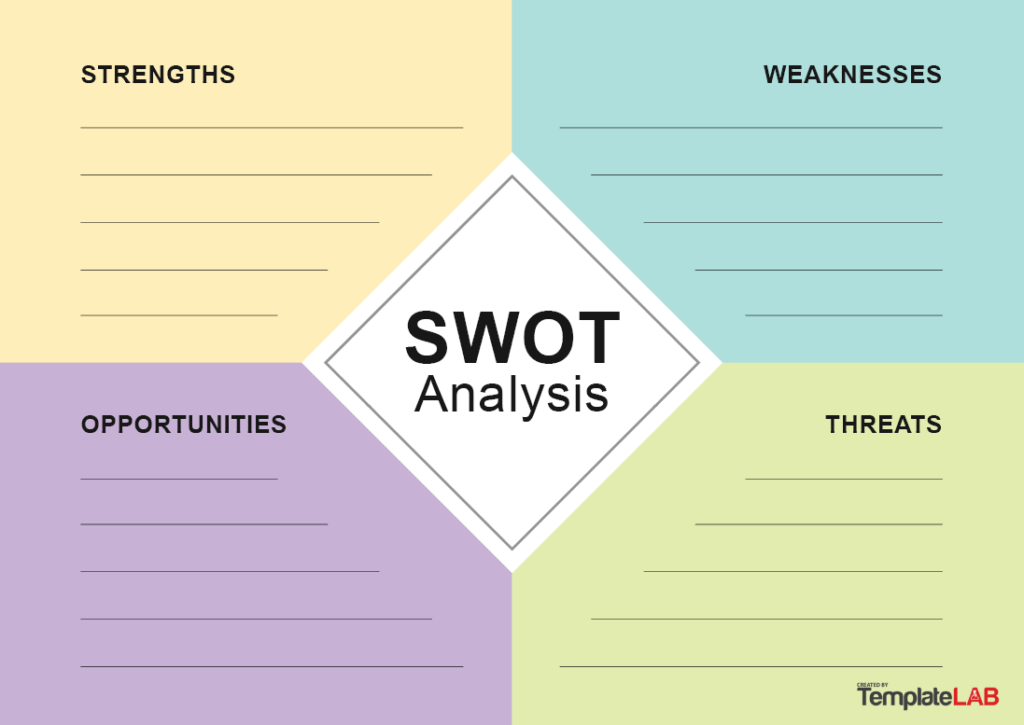
Introduction: Crafting a Dynamic eCommerce Strategy
Crafting a successful ecommerce strategy is a pivotal step for any online business seeking to thrive. This guide delves into the essential components and proven methods necessary to establish and grow a dynamic eCommerce presence.
Defining Your eCommerce Business Objectives: Setting the Foundation
Setting clear, measurable goals is foundational in shaping your eCommerce strategy. Whether it’s increasing sales, expanding your customer base, or improving customer retention, each objective should guide your tactical decisions and strategic planning.
SWOT Analysis: Conducting a Comprehensive SWOT Analysis
Before diving deeper into your strategy, it’s vital to assess your business’s current position. A SWOT analysis – evaluating Strengths, Weaknesses, Opportunities, and Threats – provides a clear picture of where your business stands in the market. This analysis helps in identifying areas for improvement and potential growth opportunities. Utilize tools like MindTools or SWOT Analysis templates available online to facilitate this process.

Tools for Tracking eCommerce Goals and Objectives
Tools like Asana or Trello can help in tracking these objectives. Whether it’s increasing sales, expanding your customer base, or improving customer retention, each objective should guide your tactical decisions and strategic planning.
Understanding Your eCommerce Audience: Key to Success
Knowing your audience is critical in the realm of eCommerce. Demographic details, purchasing habits, and preferences inform not just your product offerings, but also how you communicate with your customers, shaping your marketing and customer service strategies.
The Importance of Creating Buyer Personas
Developing detailed buyer personas is a strategic approach to understanding your ideal customers. These personas represent your typical customers and include information like demographics, behavior patterns, motivations, and goals. Crafting these profiles helps guide product development, content creation, and specific marketing strategies, ensuring they resonate with your target audience. By understanding the needs and challenges of your personas, you can tailor your offerings and messages more effectively, leading to increased engagement and conversions.
Utilizing Social Media Analytics and Survey Tools
Social media analytics play a crucial role in understanding audience preferences and trends. Platforms like Facebook Insights, Twitter Analytics, and Instagram Insights provide valuable data on your audience’s engagement, behaviors, and demographics. Additionally, survey tools such as SurveyMonkey or Google Forms can be used to gather direct feedback from your customers. These insights are instrumental in fine-tuning your marketing strategies, content, and overall approach to meet the evolving needs and interests of your audience.
Tools for Gaining Insights into Your eCommerce Audience
Use tools like Google Analytics or customer feedback platforms to gather demographic details, purchasing habits, and preferences.
Designing a User-Friendly eCommerce Website
An intuitive, easily navigable website is key to keeping potential customers engaged. Elements like clear navigation, detailed product descriptions, and a seamless checkout process enhance user experience, reducing bounce rates and boosting conversions.
Essential Tools and Platforms for eCommerce Web Design
Consider using platforms like WordPress WooCommerce or Shopify for design and employ user experience testing tools like Hotjar.
Effective eCommerce Marketing Techniques: Boosting Visibility and Engagement
Integrating a mix of SEO, email marketing, and social media strategies can significantly boost your online visibility. Tailor these techniques to align with your brand and audience for cohesive and effective marketing outreach.
Top Marketing Tools for Elevating Your eCommerce Strategy
Utilize essential SEO tools like SEMrush or Ahrefs, email marketing platforms like Mailchimp, and social media management tools like Hootsuite for cohesive and effective marketing.
Utilizing Analytics to Enhance Your eCommerce Strategy
Use analytics tools to track customer behavior, sales trends, and website performance. This data is invaluable for making informed decisions to refine your strategy and improve user experience continually.
Tools for tracking trends and behavior
Employ tools like Google Analytics and Mixpanel to track customer behavior, sales trends, and website performance.
Customer Experience: The Heart of Your eCommerce Strategy
Exceptional customer service can set your eCommerce site apart. Focus on building strong customer relationships through responsive support, engaging content, and personalized experiences with the proper ecommerce personalization strategy.
CRM Tools: Strengthening eCommerce Customer Relationships
CRM tools like Salesforce or HubSpot can help manage customer relationships and personalize experiences, building strong connections and loyalty.
Staying Ahead: Adapting to eCommerce Trends
The eCommerce landscape is constantly evolving. Stay informed about industry trends through blogs (like this one), webinars, and online courses and be ready to adapt your strategies to stay competitive and relevant.
Building a Robust eCommerce Sales Funnel: From Awareness to Conversion
A well-structured sales funnel guides potential customers from initial awareness to the final purchase. Develop a funnel that resonates with your audience, focusing on creating awareness, fostering interest, building desire, and facilitating action. Use CRM and marketing automation tools to effectively manage this process.
Optimizing Your eCommerce Funnel: Tools for Conversion and Retargeting
Regularly analyze and refine each stage of your funnel. Implement A/B testing to optimize landing pages and calls-to-action. Use customer feedback and data analytics to enhance the shopping experience, and explore tactics like retargeting to improve conversion rates.
Tools for A/B testing and retargeting
Implement A/B testing with tools like Optimizely or VWO and explore retargeting tactics using platforms like Google Ads for improved conversions.
Conclusion: Evolving and Adapting Your eCommerce Strategy
Your eCommerce strategy is a dynamic, evolving plan that should adapt to changes in consumer behavior, market trends, and technological advancements. Stay flexible, be ready to learn, and continually refine your approach for sustained success.
Need Help? Personalized eCommerce Strategy Assistance
If you’re navigating the complexities of crafting an effective eCommerce strategy and find yourself needing guidance, I’m here to help. As a seasoned professional in web development and eCommerce management, I offer personalized eBusiness consultations and solutions tailored to your unique business needs. Whether it’s building a seamless sales funnel, optimizing your online store for better conversions, abandoned carts or staying ahead with the latest eCommerce trends, my expertise is just an email away.
Reach out to me, for dedicated support in elevating your eCommerce success. Let’s make your online business thrive!



2 comments on “How to Build Your eCommerce Strategy: Proven Approaches for Success”